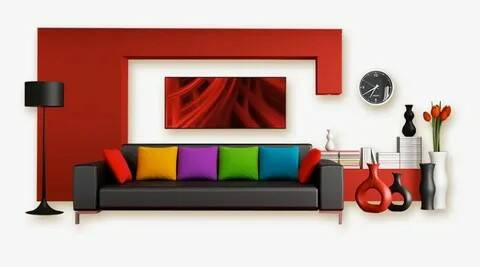Buying home decorations can be an enjoyable and creative process. Here’s a guide to help you with the process:
- Determine Your Style: Start by identifying your preferred interior design style. Explore different styles such as modern, traditional, minimalist, rustic, or eclectic. This will give you a direction when selecting home decorations.
- Set a Budget: Determine how much you’re willing to spend on home decorations. This will help you prioritize your purchases and avoid overspending.
- Make a List: Create a list of the specific items you need or want to buy for each room. Consider larger items like furniture, as well as smaller decorative pieces like artwork, vases, and cushions.
- Measure and Plan: Take measurements of the rooms and areas where you plan to place the decorations. This will help ensure that the items you choose fit properly in the available space.
- Research and Explore: Look for inspiration by browsing interior design magazines, websites, social media platforms, and visiting home decor stores. Get ideas for color schemes, textures, and different types of decorations.
Determine Your Style
Determining your style is an important step when buying home decorations as it helps you create a cohesive and personalized look for your space. Here are some tips to guide you in determining your style:
- Explore Inspiration: Look for inspiration in interior design magazines, websites, social media platforms, and home decor blogs. Save or bookmark images that resonate with you and start identifying common elements or themes.
- Consider Your Preferences: Think about the colors, patterns, textures, and materials that you naturally gravitate towards. Consider your personal taste and what makes you feel comfortable and happy in a space.
- Identify Key Elements: Pay attention to the key elements that define different interior design styles. For example, modern styles often feature clean lines and minimalism, while traditional styles focus on ornate details and classic furnishings. Eclectic styles blend various elements and mix different patterns and textures.
- Assess Existing Items: Take a look at your existing furniture, artwork, and accessories. Determine if you have any preferences or tendencies towards a particular style. You can build upon these existing elements to create a cohesive look.
- Consider Your Lifestyle: Your style should also reflect your lifestyle and how you use your space. If you have a busy household, you might lean towards more durable and low-maintenance options. If you prefer a serene and relaxed
- Visit Showrooms https://www.buydo.eu or Stores: Explore furniture showrooms, home decor stores, and online platforms to see different styles in person. Visualize how different pieces would fit into your space and resonate with your personal style.
Set a Budget
Setting a budget is an essential step when buying home decorations to ensure you stay within your financial means. Here are some tips to help you set a budget for your home decor purchases:
- Assess Your Finances: Take a close look at your overall financial situation. Consider your income, expenses, and any other financial obligations you have. Determine how much you can comfortably allocate towards home decorations without compromising your financial stability.
- Prioritize: Identify the areas or rooms in your home that you want to focus on first. This will help you allocate your budget accordingly and prioritize your spending on the most important areas.
- Research Prices: Get an idea of the general price range for different types of home decorations. Look online, visit stores, and compare prices to understand the average cost of the items you’re interested in. This will give you a realistic sense of what you can expect to pay.
- Create a List: Make a list of the specific home decorations you need or want to purchase. Be specific about the items and estimate their approximate costs. This will give you a clearer picture of the overall budget you’ll need.
- Allocate Funds: Divide your overall budget among the different categories or items on your list. Consider allocating more funds to larger, essential pieces like furniture, and leave some flexibility for smaller accessories or decorative items.

Make a List
Creating a list is a practical and organized way to guide your purchases when buying home decorations. Here’s a guide to help you make a list for your home decor shopping:
- Assess Each Room: Start by assessing each room in your home. Determine which rooms you want to focus on and prioritize them on your list. Consider the purpose of each room and the overall ambiance you want to create.
- Identify Needs and Wants: Make a distinction between items you need and items you want. Needs are essential items that are necessary for functionality, while wants are items that add style and personality to the space. This will help you prioritize your purchases and stay within your budget.
- Furniture: List the furniture pieces you need or want for each room. Consider essentials like beds, sofas, dining tables, and storage units. Include any specific requirements or preferences such as size, style, and functionality.
- Lighting: Identify the lighting fixtures you need for each room. This can include overhead lighting, floor or table lamps, task lighting, or decorative accent lighting. Note down the desired style and purpose of each lighting fixture.
- Wall Decor: Consider the wall decor items you want to include, such as artwork, mirrors, shelves, or wall clocks. Determine the sizes, styles, and placement for each item.
Measure and Plan
Measuring and planning are crucial steps when buying home decorations to ensure that the items you choose fit properly and complement your space. Here’s a guide to help you with measuring and planning:
- Gather Measuring Tools: Equip yourself with measuring tools such as a measuring tape, ruler, and possibly a laser level for accuracy.
- Measure the Room: Start by measuring the overall dimensions of the room, including the length, width, and height. Note down these measurements on a notepad or in a digital document.
- Measure Walls and Windows: Measure each wall individually, noting the length and height of each wall. Also, measure the dimensions of windows and doors, including the frame and any trim.
- Identify Focal Points: Determine the focal points in the room, such as a fireplace, a large window, or a prominent architectural feature. Measure the dimensions of these focal points, including their width, height, and depth, if applicable.
- Consider Furniture Placement: If you have existing furniture or plan to purchase new pieces, measure the space where you intend to place them. Measure the length, width, and height of furniture items to ensure they fit comfortably within the designated area.
Research and Explore
Researching and exploring different options is an important step when buying home decorations. It allows you to gather ideas, discover new trends, and make informed decisions. Here’s a guide to help you with researching and exploring:
- Gather Inspiration: Start by gathering inspiration from various sources. Explore interior design magazines, websites, social media platforms (such as Pinterest and Instagram), and home decor blogs. Save or bookmark images, articles, or posts that catch your eye and align with your style preferences.
- Identify Styles and Themes: Pay attention to different interior design styles and themes that resonate with you. Take note of the colors, patterns, textures, and overall aesthetics that appeal to your taste. This will help you narrow down your choices and create a cohesive look.
- Explore Different Stores and Brands: Visit different home decor stores, both online and physical, to see the variety of options available. Explore the websites of popular home decor brands and retailers to browse their collections. Take note of the brands and stores that align with your style preferences and offer the type of products you’re looking for.
- Read Customer Reviews: When exploring different stores or brands, take the time to read customer reviews and ratings. This can provide valuable insights into the quality, durability, and customer satisfaction associated with specific products or brands. Pay attention to both positive and negative reviews to get a balanced perspective.
- Consider Budget-Friendly Options: While exploring, be mindful of your budget. Look for budget-friendly options that offer good value for money without compromising on quality. Consider sales, discounts, or clearance sections where you may find affordable home decor items.


Leave a Reply